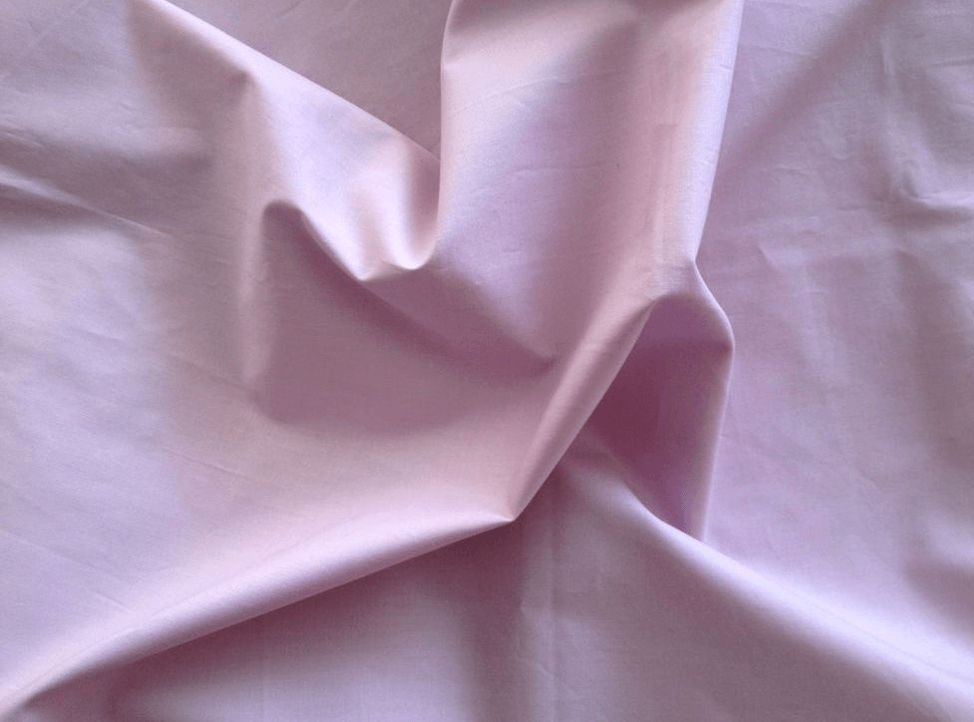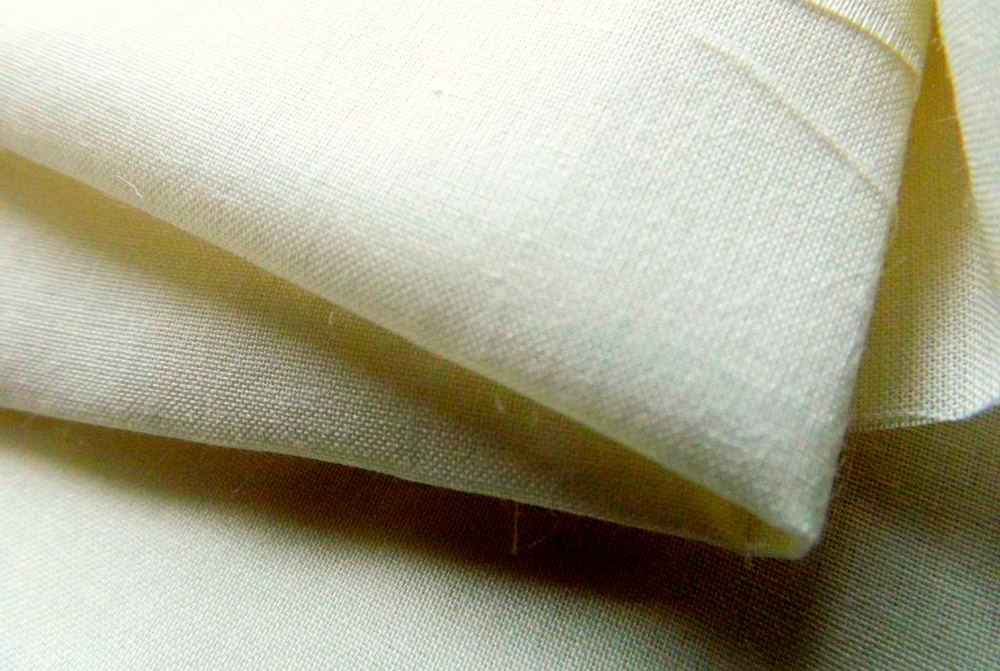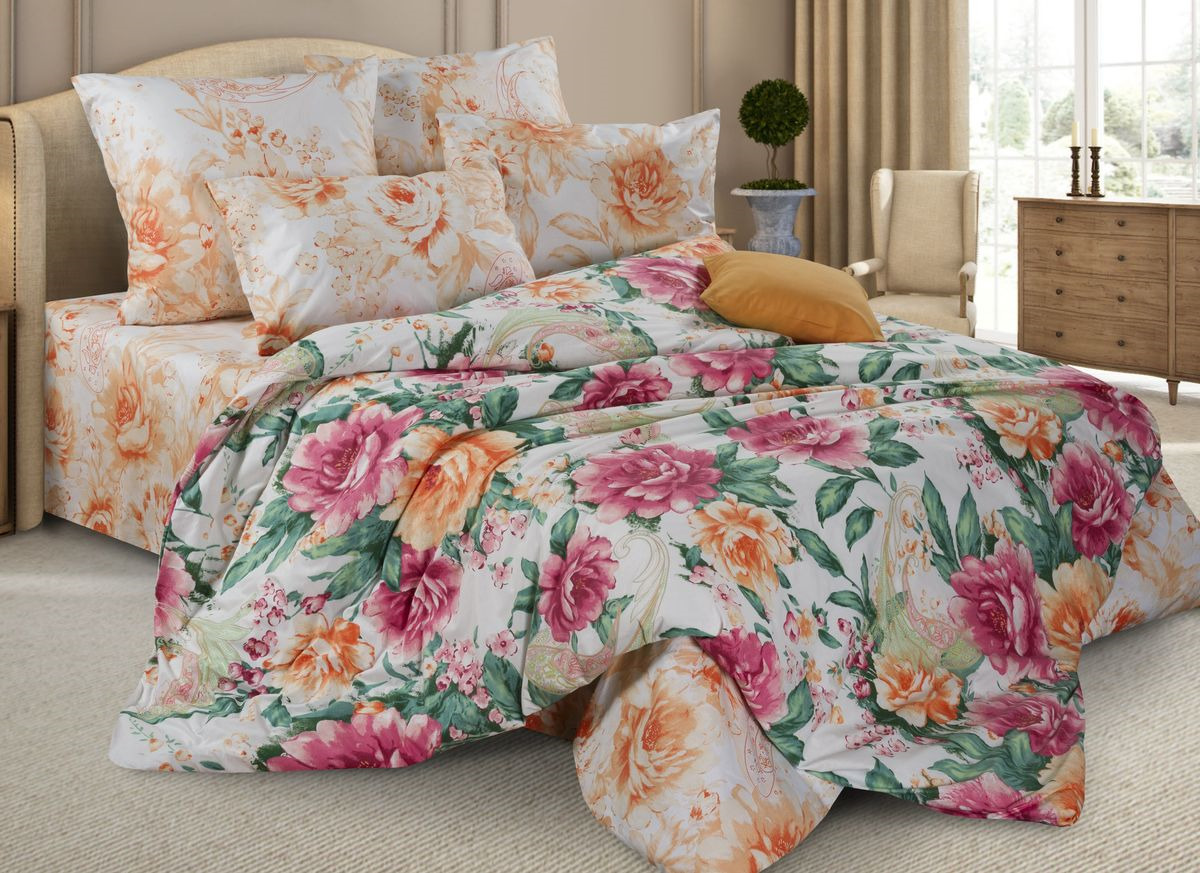Features of percale fabric for bedding
Percale fabric was originally produced in India. The name of this type of textile “pargalah” is translated from Persian as “rag”. The fabric is made from natural long-staple cotton fibers, pre-combed using a special technology.

Before you understand what kind of fabric is percale, you need to know that this fabric is characterized by a plain type of weaving of threads. This provides the material with increased strength. Due to this property, certain types of percale fabric in past centuries were used for the production of ship sails. The thinner versions were used for clothing and bedding.

Here is a detailed description of what kind of fabric for bedding is poplin. It is produced by means of a plain weave with the addition of cotton or synthetic fibers formed into yarns of different thicknesses. This contributes to the creation of a slightly scarred surface. It first appeared in Italy, which is where the name originated. Such fabrics are widely used for sewing men's and women's clothing, curtains, towels and tablecloths.

Satin weave provides a certain looseness of texture, which makes the material delicate. Such bed linen is soft, smooth with a silky sheen. It is preferred by people with sensitive skin. Expensive bedding sets are made with a jacquard pattern (for example, satin, stripe).
Note! Satin requires careful care of products. Therefore, it is not recommended to use it for a newborn's bed, which will need to be changed frequently and washed with hot water.
Coarse calico is the closest analogue of percale, it is notable for its inexpensive cost. It also looks the same.

What is the difference
Percale, like coarse calico, is obtained using the classic plain weave of fibers. In this case, threads with the same thickness are used for the second fabric. For the production of percale, a different technology is used that combines different diameters of raw cotton. Therefore, the canvas is woven with thin threads for the front side, additionally treated with glue solution, and the wrong side is formed by thickened threads.

Note! A flawless look and a slight shine is the result of processing fine threads with a dressing that increases strength and aesthetics.
The difference between coarse calico and percale is that the Indian material is characterized by great smoothness and silkiness to the touch. The structure of the coarse calico is more mesh. Visually, their appearance also differs, since the percale stands out with a luxurious semi-matt shine, and the calico material looks simpler.

Determining what type of canvas belongs to, in comparison with satin, is somewhat more difficult. Both options are equipped with a smooth and silky top layer, while satin textiles are softer and less dense.

Having studied in what parameters coarse calico is superior to poplin or satin and percale in what way, you can visually determine the type of fabric.
Composition (material and density of the linen)
Durability, comfort and hygiene of bed linen are due to such parameters as the density of the material, as well as its composition. Most preferred are natural fabrics that contain a small percentage of synthetic impurities.

The traditional raw material for percale is 100% cotton, sometimes flax fibers are used instead. However, to improve performance and reduce material costs, some manufacturers add natural and artificial fibers such as linen, silk or polyester. Such composite modifications are more inexpensive in price, while absorbing moisture worse, and have a shorter service life. When using different compositions, the fabric is formed from long fibers by means of a cross weave, which distinguishes percale from other fabrics.

There are 2 types of density: linear and surface. The first is the ratio of mass to length, and is measured in g / km). The second option is defined as the inverse ratio to weight, and is calculated in g / m2. When choosing bed linen, it is necessary to take into account the characteristics of the density of the fabric, g / m2. Suitable parameters are regulated by a special standard, namely GOST 31307-2005. The permitted minimum values are from 110 g / m2.

The weaving density of threads for modern percale reaches 100-160 threads per 1 cm2. Poplin has an areal density of 125 g / m2, which is 85-120 threads per centimeter. Sateen fabric of bed linen, as a rule, is made with the use of silk / viscose, cotton, or their combined composition. The fiber density is in the range of 125-220 g / m2.

Advantages and disadvantages
Like all textile options, percale and poplin materials have pros and cons.

Mostly positive reviews are left on the percale material for bedding. Since the basic advantages of the fabric are the following properties:
- Durability of operation. The average service life of various things is more than 7-8 years. The resource reaches over 1000 washes.
- Increased web density. This figure is 130-150 g / m2, higher than the values of other cotton counterparts.
- Strength. The original look and color saturation is retained even after numerous washes, ironing, etc.
- Ability to maintain structure. Percale canvas is not prone to deformation, the appearance of pellets.
- Softness and smoothness. The production is based on untwisted cotton fibers, which makes the surface sliding.
- Low thermal conductivity. This keeps you warm in cold weather and prevents the greenhouse effect in summer.

The disadvantages of such fabrics include the fact that they wrinkle after washing. Therefore, they require mandatory alignment with an iron or a steamer.
The advantages of poplin are the following characteristics:
- Increased level of strength. Wardrobe items or interior elements made of this fabric are not "rubbed" and retain their impeccable appearance for more than 4-5 years.
- Good indicators of hygiene and air permeability ensure the comfort of wearing various things.
- Thermal insulation properties help keep warm during winter.
- The hypoallergenicity allows the fabric to be used for sewing clothes for people with hypersensitivity.
- The soft and silky texture makes the material an excellent raw material for bedding and clothing.
- Resistance to creasing and deformation. Shades hardly fade after a lot of washings.
The disadvantages of poplin include the fact that varieties equipped with woolen or silk impurities contribute to strong shrinkage of the fabric after washing.
Satin linen shines like silk, while being more durable and can withstand a large number of washes of 300-400. However, the material can build up static electricity and therefore attracts dust.

Bed linen made of coarse calico is hypoallergenic. In terms of cost, coarse calico made of high quality cotton threads will be more expensive than percale fabric made from raw materials of average quality. Coarse linen is characterized by reduced wear resistance, in contrast to percale.

Which is better
It is recommended that bed linen be selected according to personal preference and technical properties. For the bed of young children, high-density canvases made by means of coarse calico or poplin weaving are suitable. In other cases, it is better to choose the option of cotton fabric, suitable for softness and design.

Varieties of percali
Textile factories produce the following types:
- Technical. It is used to create tents, parachutes, awnings, specialized industrial covers. Increased values of this type of wear resistance are formed by additional treatment with special solutions. They increase strength and density and also make the structure almost waterproof and dustproof.
- Domestic. This option is in demand for various consumer needs, therefore it is used for sewing bed linen, clothing items, table textiles (tablecloths, napkins, etc.).

Varieties for domestic use are additionally divided into several types according to the method of drawing:
- bleached;
- plain dyed;
- printed;
- jacquard;
- embroidered.

How to properly wash percale and other materials
High quality cotton fabrics are easy to care for. Their softness increases over time. However, unlike coarse calico, percale retains its properties after more washings.

Recommendations:
- It is advisable to wash at a temperature of 40-60 o C.
- It is better to choose spinning in the washing machine when the drum rotates in the range of 800-1000 rpm.
- Software reduction of humidity in drying equipment is allowed.
- Ironing slightly damp fabrics is possible at a temperature of 150 ° C. When the textiles are completely dry, steam treatment is optimal.

Important! Coarse calico and percale products without impurities do not shrink, therefore, if necessary, smooth-dyed or bleaching products can be boiled.
What else is sewn from percale
In the old days, this cotton textile was used to cover the wings of aircraft. At the same time, the fabric was impregnated with a specialized varnish. Today, in addition to bed linen, percale is used for sewing women's shirts, blouses and dresses.

VIDEO: Percale fabric - properties, characteristics.










Discussions
Very interesting article! I learned a lot about my favorite linen) I choose percale bed for its softness, smoothness and at the same time high density and durability.